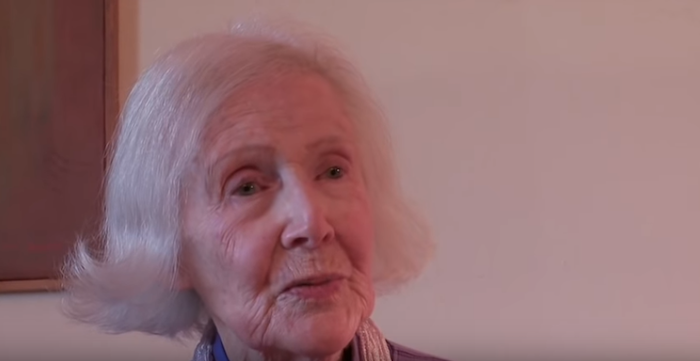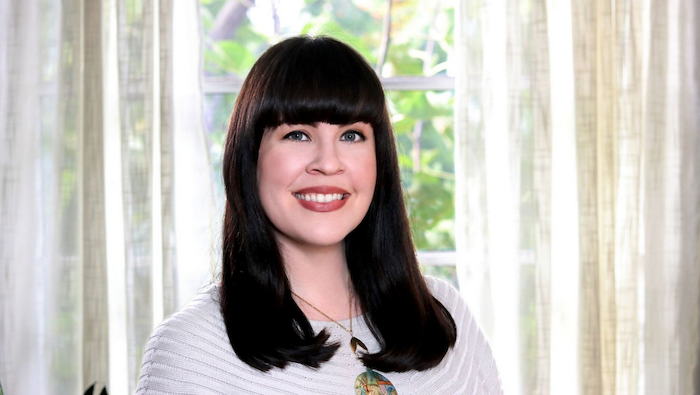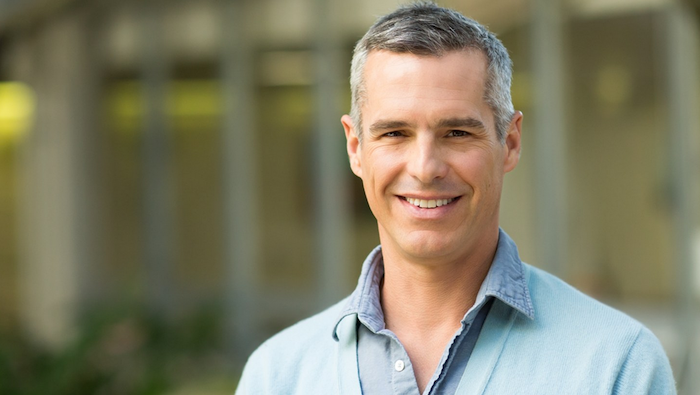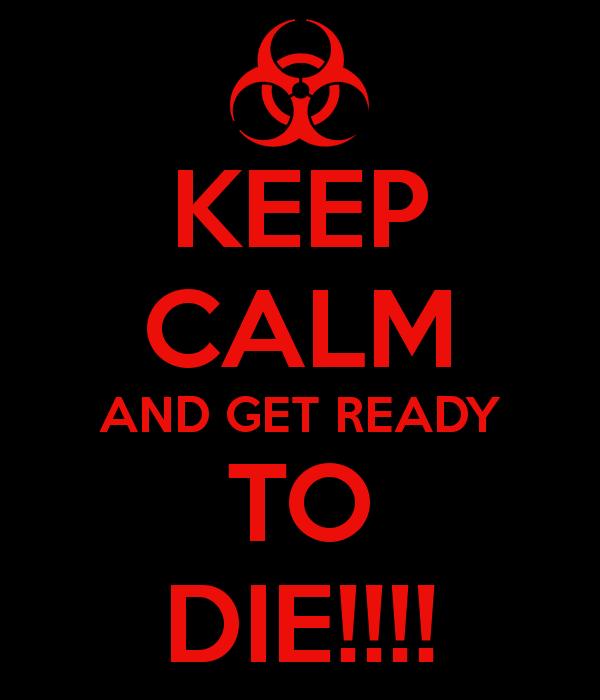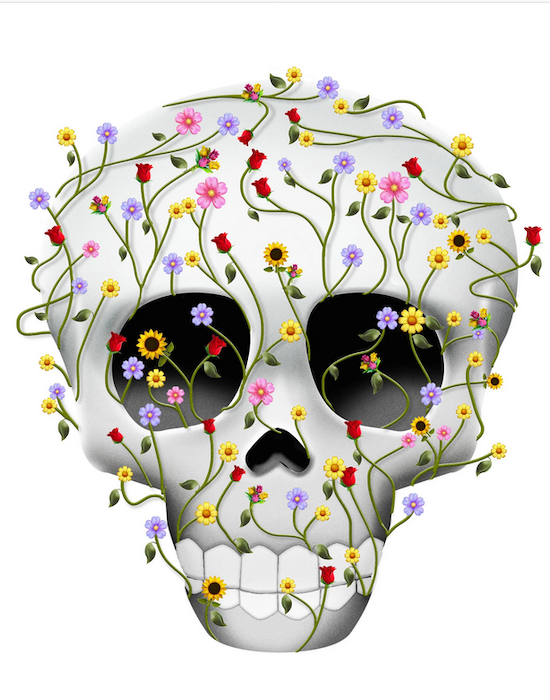She wasn’t dying. She wasn’t even sick. In fact, her risk of contracting Covid-19 had been reduced after she was furloughed from her job at a Manhattan bookseller and retreated to her rural hometown, Callahan, Fla. But when she came across the poem “Lady Lazarus,” by Sylvia Plath, Ms. Rodriguez knew she had found the perfect words to mark her digital legacy:
Through Cake, Ms. Rodriguez also filled out a “trusted decision maker” form, appointing her younger sister to call the shots should she end up incapacitated. She was still debating other important details: Did she want to be buried or cremated? If the latter, would her ashes be scattered, pressurized into a diamond, composted into tree food? Also, how much would it annoy the guests at her funeral if she requested that her favorite album, “Wolfgang Amadeus Phoenix,” be played on loop?
Ms. Rodriguez conceded that it might seem a little weird to be considering all of this in her mid-20s. On the other hand, young people around the world were getting incredibly sick, incredibly fast.
End-of-life decisions can be overwhelming, but making those choices when she was healthy gave her more control. Knowing that she’d ease the burden on her family if the worst happened also gave her peace of mind. “It would be easier for people around me to know what I want,” she said.
Still, selling death to people in their 20s and 30s wasn’t easy. Cake’s team sometimes received emails from young adults, wondering if the site wasn’t a tad morbid. Since Covid-19, this has changed. Millennials are newly anxious about their mortality, increasingly comfortable talking about it and more likely to be grieving or know someone who is.
“The stigma and taboos around talking about death have been way reduced,” Cake’s co-founder Suelin Chen, 38, said. This has driven conversation across social media, spurred interest in deathfluencers (they will discuss how funeral homes are responding to the coronavirus but also whether your pet will eat your eyeballs) and increased traffic to end-of-life platforms. From February to June, people signed up with Cake at five times the normal rate.
Another new company, Lantern, which calls itself “the single source of guidance for navigating life before and after a death,” saw a 123 percent increase in users, most of them under 45.
Lantern’s tone is soothing and earnest, but not everyone takes that tack. Cake skews playful. It features a tombstone generator and suggestions like “Viking funeral” and “shoot my ashes into outer space.” New Narrative, an event-planning company for funerals and memorials, introduces itself with a wink: “We’re not your grandma’s funeral (… unless it’s your grandma’s funeral).”
It’s a tricky opportunity for these start-ups to navigate. “When you have a brand that’s directly interfacing with people in the throes of loss and grief, you have to walk a fine line,” said Liz Eddy, 30, Lantern’s co-founder and chief executive.
All these founders stress they’re not trying to capitalize on the coronavirus. But this hasn’t stopped anyone from pivoting hard toward Covid-19. The companies have created new forums and content on how to plan for death, honor the newly dead and grieve virtually. They have initiatives with major health care providers to disseminate their products more widely and formed new partnerships with influencers. The start-ups have even begun to coordinate with one another, sharing tips in a cross-company Slack channel called “Death & Co.”
They are all hoping the pandemic will be the event that turns end-of-life planning — from designing a funeral to writing a will and final tweet — into a common part of adulthood.
The Obituary Game
In 2012, a friend invited Ms. Chen and her fiancé to dinner and suggested they play an unusual party game: Write and share their own obituaries. “It’ll be fun!” the friend said. “They do it at Stanford Business School.”
At first, Ms. Chen was delighted by the exercise: Both she and her fiancé wrote, in the imagined past tense, about a music album they hoped to one day record. But when Ms. Chen started reading what she had written about her career, she was seized with panic and started bawling at the table.
“I just lost it,” she recalled. “It was confusing to me, because I loved my job. I was happy in the most obvious ways, but there was part of me …” She wasn’t sure how to describe the upswell of emotion.
Around this time, Ms. Chen was advising health care companies in commercial strategy. While interviewing last-line cancer physicians, she would constantly run a calculation in the back of her head: “If this treatment extends life by three months, how much money is it worth?” And yet she’d wonder: But at what quality of life? The system of prolonging life at all costs seemed out of whack.
Ms. Chen had also recently lost her grandfather, who died at 95 after a long period of suffering. He lived in Taiwan, where death in very old age is treated as a celebration, Ms. Chen said. And yet there had been a lot of family conflict around the experience.
Amid the pain and relief of her grandfather’s being at rest and the joyful commemoration of his life, Ms. Chen understood that she needed a new path. She didn’t yet know what it would be, but a few years later she met Mark Zhang, a palliative care physician and technologist, at an M.I.T. health care “hackathon.” The pair won first place at the event and went on to found Cake. The platform now includes resources and templates to help users write their obituaries along with guidance for how to get them published.
The venture-backed company makes money through partnerships and will eventually add fee-based services. The pandemic has been especially busy. Cake’s services, for example, soon will be integrated into the website of the British bank RBS/NatWest.
In April, Ms. Chen learned that Partners HealthCare, a large health care system in Massachusetts, was recommending Cake to all its members. Ariadne Labs, run out of the Harvard School of Public Health and Brigham and Women’s Hospital, also came calling. They wanted help distributing their end-of-life conversation guide beyond a relatively small audience of doctors and patients. They also wanted real-time feedback from a young and healthy audience like Cake’s.
Cake also teamed up with Providence Health System, a network of 51 hospitals and 1,000 clinics in seven states, to share Cake’s “trusted decision maker” form, the document specifying an individual’s medical preferences if the person becomes incapacitated. Through Cake, individuals could submit the form to their doctor without needing a notary and two nonfamily witnesses, which are often required but difficult to get under quarantine.
The next step is offering premium services, tailored to different types of users. “Are you here because you just lost someone, or because you just had a kid, or have an aging parent, or because a celebrity just died and you had an existential crisis?” Ms. Chen said. “We’re trying to automate based on what we know about the person.”
The Pandemic Hits
In April, Ms. Chen learned that her head of product’s grandfather had died from Covid-19. She had heard of people texting and messaging their condolences, but even email seemed inappropriate, overly impersonal. Unsure of what to do, she turned to Cake. Following an article from the site, Ms. Chen shipped her colleague soup, rolls and cookies with a note: If and when you’re ready, I’d love to hear more about your grandfather.
“In the modern age, the norms around supporting people who are grieving are not super clear,” Ms. Chen said. “It used to be that you belonged to a religious community or lived in a small town, but now we’re far away from where we grew up. We’re more secular.”
During the pandemic, condolence-related traffic on Cake doubled. To address the need, the company started a forum where users can crowdsource their questions and concerns.
Lantern provides its own grief and condolence content, including a “pandemic-proof” guide to “inclusively addressing grief at work.” In recent months, more people are grieving on the job, where the emotional distress for people of color over high Black and Latino rates of coronavirus infection is compounded by anguish over police brutality.
“Especially during Covid, it’s how can you incorporate the grieving process into 9-to-5 and day-to-day work?” said Alica Forneret, 31, who runs grief workshops and just started a namesake consulting agency to help companies address this question. “Employers, managers and H.R. need to understand there’s an extra burden on people of color and especially Black people when they sit down at their computer in the morning and are expected to engage and perform.”
For Ms. Forneret and other millennial founders, preparing for death and navigating grief during the pandemic has become a form of self-care. That has created new opportunities and partnerships. When Ms. Eddy pitched funders, she situated Lantern’s end-of-life services as an untapped market in the $4.5 trillion global wellness industry.
“We’ve been called a niche market,” she said. “But death and dying is possibly the least niche market out there.”
Corporations are rethinking the wellness programs they’re offering employees, Ms. Eddy said. They’re no longer just gym memberships and kombucha on tap. Studies have found that being able to talk about your mortality makes you a happier person and improves your relationships. The thinking, for employers perhaps, is that access to end-of-life services can make people happier (and more productive) at work.
This market potential is also why Near, a start-up that connects users with grief and end-of-life support services, like death doulas and art, sound, music and massage therapists, recently decided to seek investment. The company also moved its debut from September to June and is expanding its offerings to even more unconventional end-care providers like end-of-life photographers.
“Before Covid, we were looking at being a smaller platform. We’d be able to keep up with need through bootstrapping,” a Near co-founder, Christy Knutson, 36, said. “But the demand is far greater.”
This spring, a beauty writer and skin-care company chief executive, Charlotte Palermino, approached Lantern about co-hosting an Instagram Live. She had been watching her friends “panic post” death rates and was feeling increasingly anxious.
“I know people who got really sick, were suddenly on ventilators in their 30s,” Ms. Palermino, 33, said. She received such an overwhelming response from her followers that in June, she filmed a similar video for her Generation Z audience on TikTok.
Death & Co.
In May, a large senior care company asked Ms. Eddy about a partnership. Ms. Eddy, who declined to identify the company, was intrigued but skeptical. In search of guidance, she did something that would normally be unexpected. She reached out to Ms. Chen at Cake, Lantern’s closest competitor.
Ms. Chen wasn’t surprised to hear from Ms. Eddy. In fact, she said, this kind of collaboration is frequent among end-of-life chief executives. “There’s a lot of texting and calling all the time: who are the good investors, the partners, give me the lowdown on these people,” she said.
The most common means of communication among end-of-life founders — and where Ms. Eddy went to reach Ms. Chen — is the cheekily titled Death & Co. channel on Slack. It was born in December during End Well, a conference about improving the culture, products and policy around end of life.
After one of the sessions, a handful of female founders gathered for an impromptu happy hour. They bonded over the rarity of having so many women running companies in the same industry, all them, in one way or another, trying to challenge the corporate, predominantly male funeral industry.
They discussed the difficulties of securing funding as womenand the challenges of trying to make a distinctly unsexy product accessible and affordable. Ms. Chen said a male founder had told her: “No one thinks about death. I don’t. I’m immortal.” Ms. Eddy said another had told her that he thought she’d be more successful if she created the “Tesla” of end-of-life services.
The women decided to start a WhatsApp group, which one of them named “Death Chicks.” A couple of months later, with more people wanting to join, including a handful of men, Ms. Eddy moved everything to Slack and renamed it Death & Co. For some months, the group was largely dormant. That changed in March.
“At the beginning of coronavirus, we came together and said this can all be reimagined with alternative, more modern solutions,” said Christina Andreola, 31, the founder of New Narrative, who joined the Slack channel in March. “My colleagues were asking: How can we team up to be competitive?”
The channel has around 70 members. They have worked together on a white paper about the funeral industry and Covid-19, raised funds for personal protective equipment for funeral directors and created short video guides for health care workers to talk about end-of-life options with their patients. Eterneva, a company that turns ashes into diamond jewelry, used the group to start a series of Instagram Lives about collective grief. LifeWeb360, which creates multimedia memorial scrapbooks, teamed up with New Narrative to create resource guides for planning virtual memorials.
The women have also freely shared connections and leads. Ms. Knutson of Near joined Death & Co. in March. She used the group to meet end-of-life photographers, a small and elusive set, and expand her provider list of death doulas, caregivers who help dying individuals navigate the end-of-life process.
“Overnight I walked into a virtual room with loads of smart, driven leaders who are building things that it would have taken me months if not years to hear about otherwise,” she said.
Not everyone is finding what he or she needs at Death & Co. Ms. Forneret, one of the few Black members, left after the police killing of George Floyd in Minneapolis in May. She said that the channel had done a lot of good for the industry and that she worked closely with Ms. Eddy and other members. But at this moment, she wants to align herself with other founders of color, she said.
In mid-June, Ms. Forneret participated in a Zoom panel featuring five Black entrepreneurs. The topic: how to have a “good death” in a racist society. The event was organized by Alua Arthur, 42, who runs a death doula training company, Going With Grace.
Ms. Arthur serves as an adviser to Cake and Near and has become a de facto spokeswoman for Black-owned death care businesses, especially in the last couple of months. She has become exhausted in this role and said end-of-life start-ups should be working harder to reach communities of color, which are largely underserved in the industry.
Even so, all of these founders share a mission: to democratize end-of-life planning and care. Ms. Arthur said the searchable database and broad collection of providers on Near were a step in the right direction.
Trust and Will, a company that bills itself as Turbo Tax for estate planning, charges a small fraction of what most lawyers do. Eterneva, the company that turns your loved one’s body into bling, just rolled out financing. Cake’s and Lantern’s basic preplanning services are free. Given that the average cost of a funeral in 2019 was $7,640, this kind of foresight could reduce the cost of dying. Because maybe you don’t want to languish on a ventilator or need a fancy coffin.
At the very least, when we can personalize our deaths the way we do our weddings and our wardrobes, we can feel a little more control over life’s greatest uncertainty. It’s something of a silver lining to this very scary moment.
“We’re never going back to the way it was,” Ms. Chen said. “That’s a positive thing — to accept the reality that we’re not immortal.”
Jennifer Miller is the author most recently of the novel “Mr. Nice Guy.” Her next book follows a year in the lives of first-generation college students.
Complete Article ↪HERE↩!
Talking about death makes many of us uncomfortable, so we don’t plan for it. NPR’s Life Kit offers tips for starting an advanced directive to prepare for a good death.
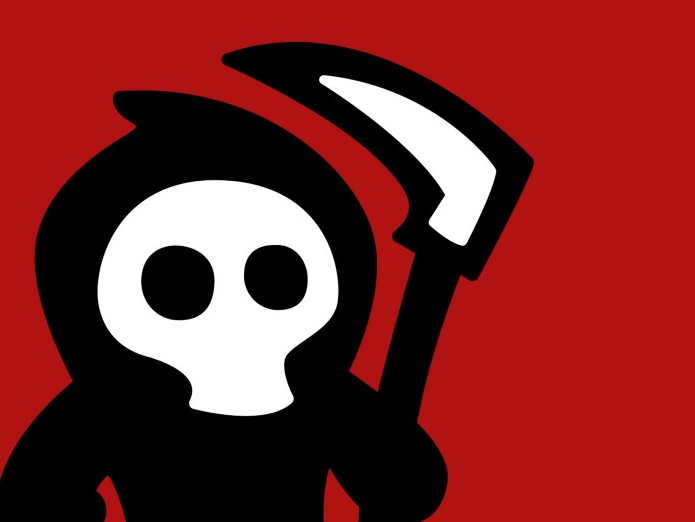
By Kavitha Cardoza
MICHEL MARTIN, HOST:
Thinking about death makes most people uncomfortable, which means many of us end up not planning. But Betsy Simmons Hannibal, a legal editor, says it’s like wearing a seatbelt.
BETSY SIMMONS HANNIBAL: We all wear our seatbelts even though we don’t expect to get in an accident on the way to the store. It’s just, like, something that we know is possible.
MARTIN: So buckle up. NPR’s Life Kit looked into preparing for the end, and reporter Kavitha Cardoza is going to walk us through a simple document called an advance directive.
KAVITHA CARDOZA, BYLINE: You don’t need to have a medical background or a lawyer to fill out an advance directive. You don’t even need a lot of time. And I promise it’s not too morbid. You can easily find an advance directive form online. There are different versions, but basically, it has two sections. The first is the most important – the medical power of attorney. Choose a person who can legally make health care decisions for you if you can’t.
PALLAVI KUMAR: Think about the person in your life who understands you, your goals, your values, your priorities and then is able to set aside their own wishes for you and to be a voice for you.
CARDOZA: That’s Dr. Pallavi Kumar, a medical oncologist and palliative care physician at the University of Pennsylvania. She says your medical proxy should be someone you trust who can handle stress because your loved ones will disagree on what to do, and it can be emotional. So you want to name someone who will carry out your wishes. Kumar says research shows when a caregiver sees a loved one die in the hospital under circumstances they believe that person never would have wanted, they’re in emotional pain for a long time.
KUMAR: And at six months and a year after death, these bereaved caregivers are still suffering from pretty severe depression and anxiety. There’s even some data to show that the survival for those caregivers is shortened.
CARDOZA: So think of an advance directive as a gift you’re giving your loved ones. The second section of the advanced directive document is called a living will. This part walks you through the general approach of how you want to die and what kind of care you want. Do you want to be resuscitated? Are you OK being hooked up to a ventilator? How do you feel about a feeding tube? Dr. Jessica Zitter is an ICU and palliative care physician in California. She says there’s no right or wrong decision. It’s personal.
JESSICA ZITTER: Someone once told me her father was – she says, he’s an old, crusty Italian man, and he said if someone else has to wipe my behind, I do not want to live. But there’s many, many others of us – if I was quadriplegic and still have an intellectual and emotional relationship with people, I don’t think I’d want to die.
CARDOZA: Even among patients who are very, very sick with cancer, less than half have had conversations about how they want to die. So it’s critical to share your wishes with your medical proxy and your loved ones as well as your doctor. Share a copy of the form with them.
Dr. Pallavi Kumar says the end of life is about more than just the medical aspect. When she knows a person’s priorities, that helps inform her treatment plan. For some patients, it might mean spending time at home with family. For others, it means trying every treatment possible for as long as possible.
KUMAR: They would say, if you’re telling me that a chemotherapy could give me another month, I want that month because that’s another month I have with my 6-year-old.
CARDOZA: While no one can predict when they’ll die, an advance directive can help you plan for how. It’s not a guarantee but a safety net for having what Doctor Zitter thinks of as a good death.
ZITTER: In order to figure out what a good death is, you have to figure out what a good life is and what living well means to you. That’s the only way to know how to die well because actually, they’re kind of reflections of each other.
Complete Article ↪HERE↩!
